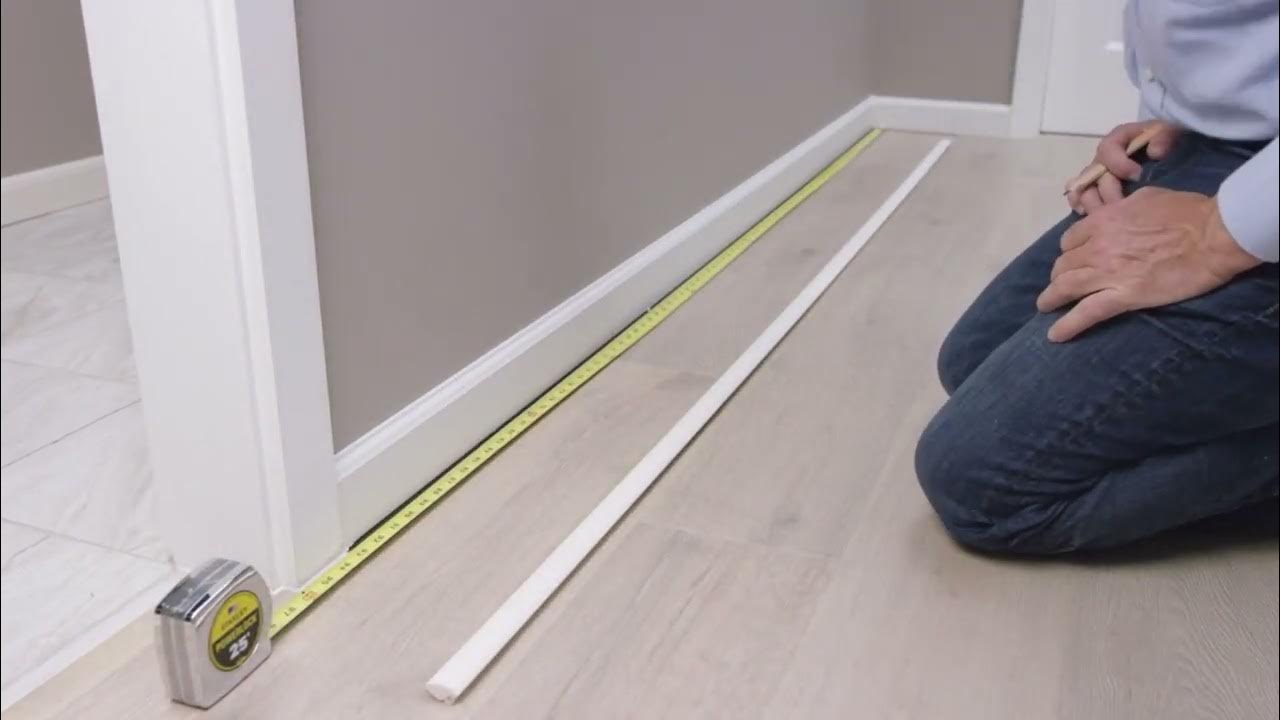How to prep for Stain and Finishing Oil
Summary
TLDRThis video provides a step-by-step guide on how to use a stain and finishing oil for wood, demonstrating its application on both soft and hard woods like pine and oak. The all-in-one product offers coloring and protection without needing an additional topcoat. It explains how different woods absorb the stain differently, making test applications important. Viewers are shown how to properly sand wood, apply the stain evenly, and layer coats for desired protection and sheen. The video emphasizes consistent sanding and pressure to avoid blotchy finishes and offers tips for achieving a durable, glossy result.
Takeaways
- 🎨 The stain and finishing oil is a versatile product that can be used on both soft and hard woods, and even for flooring.
- 🌈 The product comes in five colors, including a natural option without pigment, and can be custom mixed.
- 🔍 It's essential to practice on the same type of wood you plan to use, as different woods absorb pigment differently.
- 🌲 The softness of the wood affects the staining process; softer woods like pine absorb more pigment, while harder woods like oak absorb less.
- 📐 The grain of the wood also plays a role in the final appearance, with woods like oak showing a distinct grain pattern.
- 🕒 Allow the stain and finishing oil to sit for about 10 minutes before wiping off to ensure proper absorption into the wood.
- 🔄 Consistent sanding is crucial for an even finish; start with a coarse grit and work up to a finer one, always sanding with the grain.
- 🚫 Avoid sanding against the grain or using a grit higher than 180, as it can seal the wood and prevent proper stain absorption.
- 🛠️ Apply a generous amount of stain and finishing oil, ensuring it soaks into the wood fibers for at least 10 minutes before wiping off.
- ✨ For increased sheen and protection, additional coats of the natural stain and finishing oil can be applied after the first coat has dried.
- 🛑 Always wipe the stain off with consistent pressure and an applicator that hasn't absorbed stain, to avoid unevenness.
Q & A
What is the primary purpose of the stain and finishing oil mentioned in the script?
-The stain and finishing oil serves as an all-in-one product that both colors and protects the wood, eliminating the need for an additional top coat.
How many colors are available for the stain and finishing oil, and what is special about the 'natural' color?
-There are five colors available for the stain and finishing oil, including a 'natural' color that does not contain any pigment.
Why is it important to practice on the same type of wood before starting a project?
-Different types of wood absorb the stain and finishing oil differently, affecting the final appearance. Practicing ensures that you understand how the wood will react to the product.
What is the difference in appearance between staining pine and oak with the same product?
-Pine, being a softer wood, absorbs more pigment, resulting in a darker color. Oak, a harder wood, absorbs less, leading to a lighter appearance.
Why does the script mention allowing the stain and finishing oil to sit for about 10 minutes on the first coat?
-This allows the oils and pigments to absorb into the raw wood, ensuring a more consistent and deep penetration of the stain.
What is the recommended method for sanding wood before applying the stain and finishing oil?
-Start with a coarse grit (around 100 or 120) and move up to a finer grit, always sanding with the grain of the wood, and ensuring consistent sanding across the entire surface.
How can you achieve a darker look with unpigmented oils, and what should be used for this purpose?
-To darken the wood with unpigmented oils, apply odorless mineral spirits to the wood surface, which will evaporate quickly and provide a snapshot of the wood's appearance with the oils applied.
What is the significance of the age of the wood in terms of staining?
-Older wood tends to have a darker appearance due to aging or oxidation, which can affect the final color and depth achieved with the stain and finishing oil.
How many coats of the stain and finishing oil are recommended for a durable finish on raw wood?
-Two coats are the bare minimum for a durable finish, with three coats recommended for surfaces like floors or tabletops that are frequently washed.
What is the best way to increase the sheen and add more protection to the wood after staining?
-Apply additional coats of the natural stain and finishing oil to increase sheen and protection, with each subsequent coat enhancing the sheen further.
Why is it suggested not to use water-based products after applying the stain and finishing oil?
-Water-based products could distort the richness of the stain and finishing oil, so it's best to avoid them to maintain the product's effectiveness and appearance.
Outlines

Этот раздел доступен только подписчикам платных тарифов. Пожалуйста, перейдите на платный тариф для доступа.
Перейти на платный тарифMindmap

Этот раздел доступен только подписчикам платных тарифов. Пожалуйста, перейдите на платный тариф для доступа.
Перейти на платный тарифKeywords

Этот раздел доступен только подписчикам платных тарифов. Пожалуйста, перейдите на платный тариф для доступа.
Перейти на платный тарифHighlights

Этот раздел доступен только подписчикам платных тарифов. Пожалуйста, перейдите на платный тариф для доступа.
Перейти на платный тарифTranscripts

Этот раздел доступен только подписчикам платных тарифов. Пожалуйста, перейдите на платный тариф для доступа.
Перейти на платный тарифПосмотреть больше похожих видео

Extendable Farmhouse Table

Jenis - jenis MATERIAL yang Dapat Digunakan sebagai FURNITUR - Belajar Arsitektur

Computer Hardware : How to Assemble a Computer

Video Edukasi Cara Penggunaan Suppositoria

How to Install Quarter Rounds For Flooring Installations | Mohawk Performance Accessory

73 - Coloring/Staining Blotchy Woods
5.0 / 5 (0 votes)
